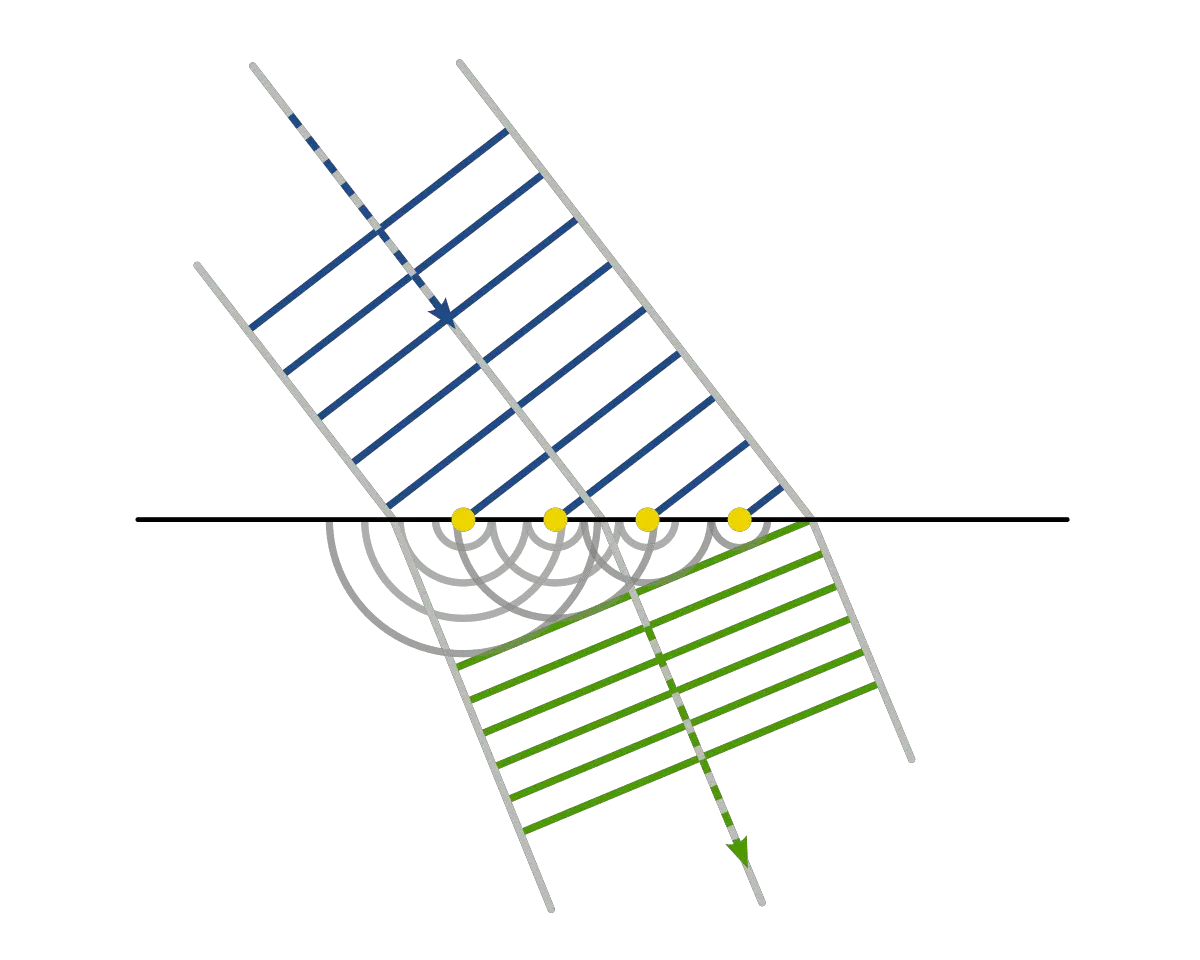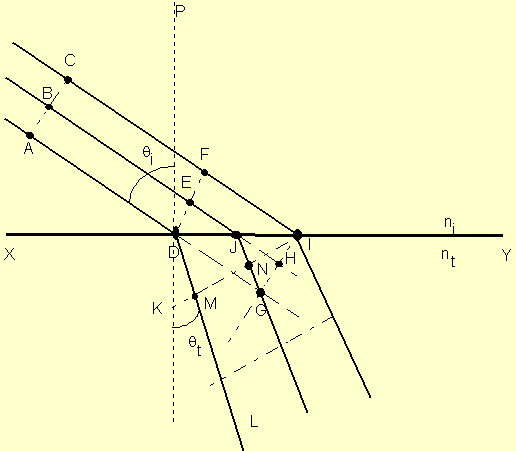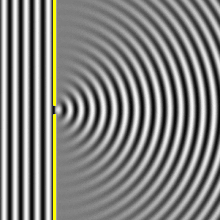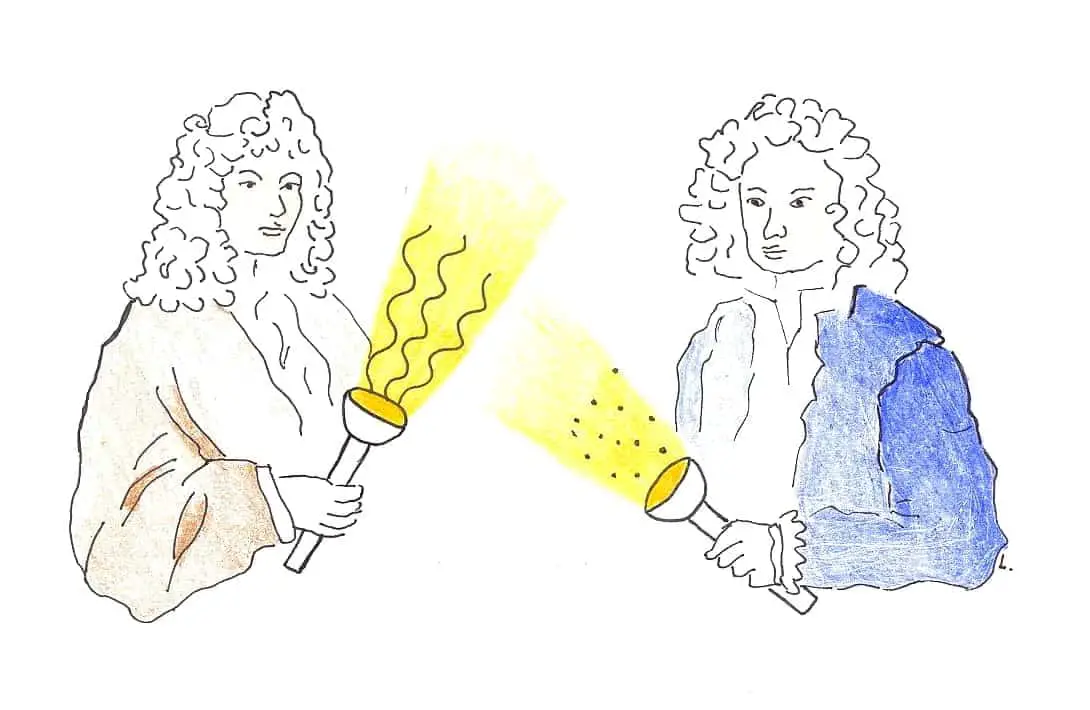In the year 1678, the Dutch physicist Christiaan Huygens (14 April 1629 – 8 July 1695), also a contemporary of the Issac Newton, suggested that the light may be a wave phenomenon.
He suggested that the apparent rectilinear propagation of light (explained by Newton’s Corpuscular Theory Of Light) is maybe due to the fact that the wavelength of light may be much smaller than the dimensions of these openings and obstacles.
In today’s world, this theory of light is known as the Huygens Principle of light.
The Nature of Light Waves

In wave motion, there are some quantities that change its value with respect to time and space. For example, in the case of the sound wave, it is the pressure at a point that oscillates as time passes.
On contrary, in the case of light, a wave is quite different from the rest. Not to mention, light is a non-mechanical wave. Lightwave doesn’t need a material medium to propagate.
Check out the Wave-Particle Duality – Physical Reality of Quantum Physics
In other words, light can travel in a vacuum. Though, there was a time when physicists used to believe that a very dilute and highly elastic medium is present everywhere in space, named “aether”.
Thanks to the Michelson-Morley Experiment, Aether was never discovered to date. Hence, the theory for the existence of Aether was abandoned.
Huygens Principle

Well, what is Huygens Principle anyway? Huygens principle of wave analysis in its general form as follows:
Various points of an arbitrary surface, when reached by a wavefront, becomes secondary wavelets. The disturbance beyond the surface results from the superposition of these secondary wavelets.
In other words, when you consider a wave, you can view the edge of the wave which is actually creating a series of circular waves. Christian Huygens was the first proposer of the wave theory of light. These waves (secondary waves) combine together just to continue the propagation of the light wave.
Huygens Principle of Secondary wavelets
Huygens postulated that from every point to which a luminous disturbance reaches, it itself becomes a source of a spherical wave.
Hence, the sum of all the secondary waves collectively determines the form of the wave at any succeeding time. Huygens called these spherical wavefronts emitted from the secondary source the secondary wavelets. In fact, he theorized that the secondary wavelets can only travel in the “forward” direction.
It is somehow fascinating that Huygens introduced his wave theory of light almost two centuries before the work of James Clerk Maxwell. I mean, without having a solid theoretical basis that Maxwell was able to provide at his time.
Finally, all the long activity of Huygens, Maxwell, and many more put an end to Newton’s Corpuscle Theory of Light and convincingly established the notion that “light is a wave phenomenon”.
Later in the coming year, the Huygens principle was modified by Augustin-Jean Fresnel into the Huygens Fresnel principle. He simply introduced the concept of the principle of interference and merged it with the Huygens principle.
Law of Reflection/Refraction Using Huygens Principle

Using his wave theory of light, Christian Huygens was able to present a qualitative description for the linear and spherical wave propagation to extract the law of reflection as well as the law of refraction.
In simple terms, the law of reflection and refraction can also be explained by the Christian Huygens wave theory of light. Though, the exact derivation of both laws involves complex mathematics.
However, things can be fairly interpreted by the geometrical methods proposed by Christian Huygens.

The consequence of both laws of refraction and reflection alters the direction of an independent wave, that is produced by the point light source.
Therefore, the obtained results from the exhaustive mathematical calculations are equivalent to Newton’s geometrical optics (Snell’s law of refraction).
However, the predictions of Christian Huygens’s wave theory of light were totally opposite to the predictions of Newton’s Corpuscle Theory Of Light. Later the experiments on the speed of light confirmed the wave theory.
Hence, the basic rules of the law of reflection and law of refraction (geometrical optics) can be easily understood in terms of the wave theory using Huygen’s Principle.
Law of Diffraction using Huygens Wave Theory of Light

Diffraction refers to the phenomenon that generally occurs when a wave confronts an obstacle or an aperture. When a wave is obstructed by an obstacle or an aperture, the light rays bent around the corner.
In other words, when a light goes through an obstacle, the wavefront is partially obstructed.
Recommended, Top 6 Game-Changing Facts About Quantum Physics You Never Knew
Therefore, only the light wave within the aperture can be viewed as superimposing. Therefore, the resulting wavefront can be viewed as constructing a circular wave. A wave that spread outward from the aperture or an obstacle.
This phenomenon allows for the bending of light around the edges. In the case of light waves, the center of the wavefront has greater intensity, beautiful fringes patterns comprising maximum, and minimum intensity are formed due to Diffraction Effect.
For example, when your mother calls you from another room. The sound of your mother seems to be coming from the doorway(unless or until your house has very thin walls).
At last, I will leave you with a quote by Christian Huygens regarding the fundamental nature of reality. And, he quotes:
I believe that we do not know anything for certain, but everything probably
That’s it for this post. If you like this article, share it if you like it, like it if you share it. You can also find us on Mix, Twitter, Pinterest, and Facebook.
